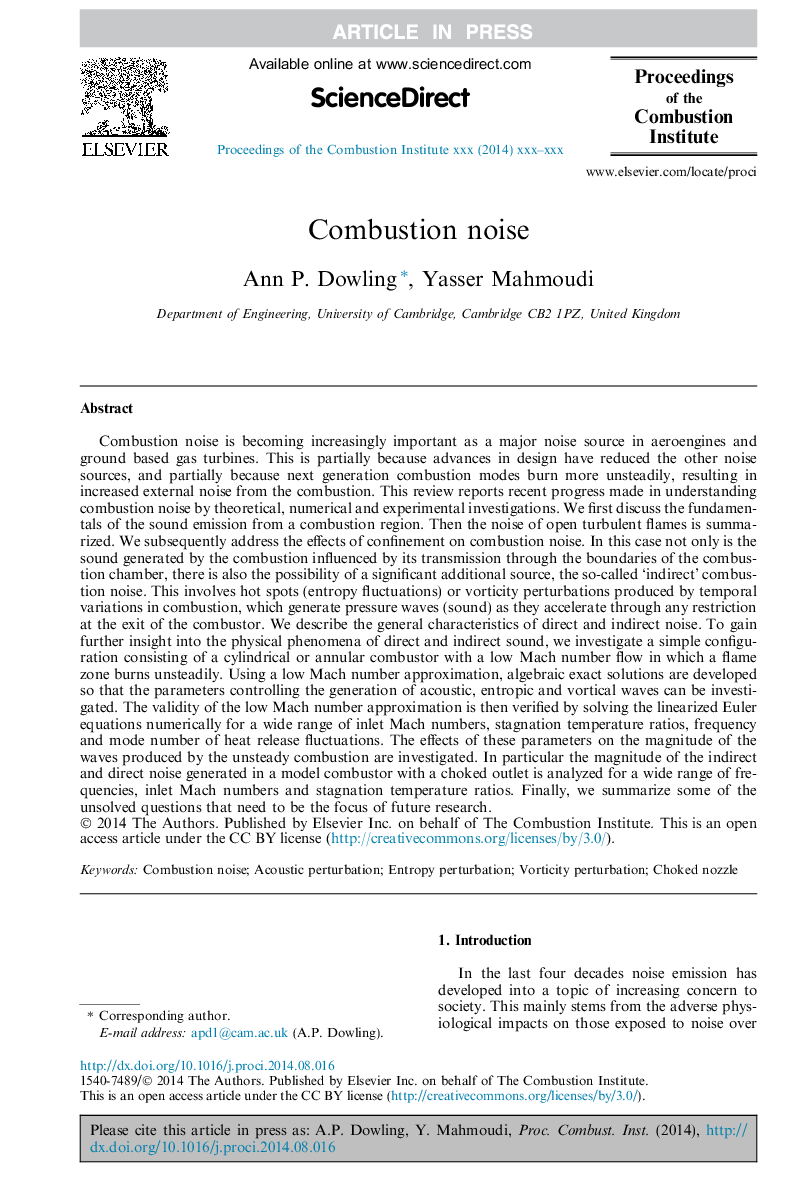| Article ID | Journal | Published Year | Pages | File Type |
|---|---|---|---|---|
| 6679212 | Proceedings of the Combustion Institute | 2015 | 36 Pages |
Abstract
Combustion noise is becoming increasingly important as a major noise source in aeroengines and ground based gas turbines. This is partially because advances in design have reduced the other noise sources, and partially because next generation combustion modes burn more unsteadily, resulting in increased external noise from the combustion. This review reports recent progress made in understanding combustion noise by theoretical, numerical and experimental investigations. We first discuss the fundamentals of the sound emission from a combustion region. Then the noise of open turbulent flames is summarized. We subsequently address the effects of confinement on combustion noise. In this case not only is the sound generated by the combustion influenced by its transmission through the boundaries of the combustion chamber, there is also the possibility of a significant additional source, the so-called 'indirect' combustion noise. This involves hot spots (entropy fluctuations) or vorticity perturbations produced by temporal variations in combustion, which generate pressure waves (sound) as they accelerate through any restriction at the exit of the combustor. We describe the general characteristics of direct and indirect noise. To gain further insight into the physical phenomena of direct and indirect sound, we investigate a simple configuration consisting of a cylindrical or annular combustor with a low Mach number flow in which a flame zone burns unsteadily. Using a low Mach number approximation, algebraic exact solutions are developed so that the parameters controlling the generation of acoustic, entropic and vortical waves can be investigated. The validity of the low Mach number approximation is then verified by solving the linearized Euler equations numerically for a wide range of inlet Mach numbers, stagnation temperature ratios, frequency and mode number of heat release fluctuations. The effects of these parameters on the magnitude of the waves produced by the unsteady combustion are investigated. In particular the magnitude of the indirect and direct noise generated in a model combustor with a choked outlet is analyzed for a wide range of frequencies, inlet Mach numbers and stagnation temperature ratios. Finally, we summarize some of the unsolved questions that need to be the focus of future research.
Related Topics
Physical Sciences and Engineering
Chemical Engineering
Chemical Engineering (General)
Authors
Ann P. Dowling, Yasser Mahmoudi,
